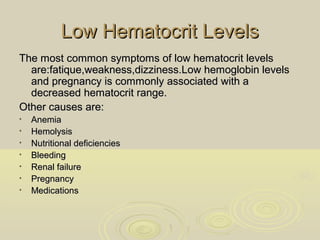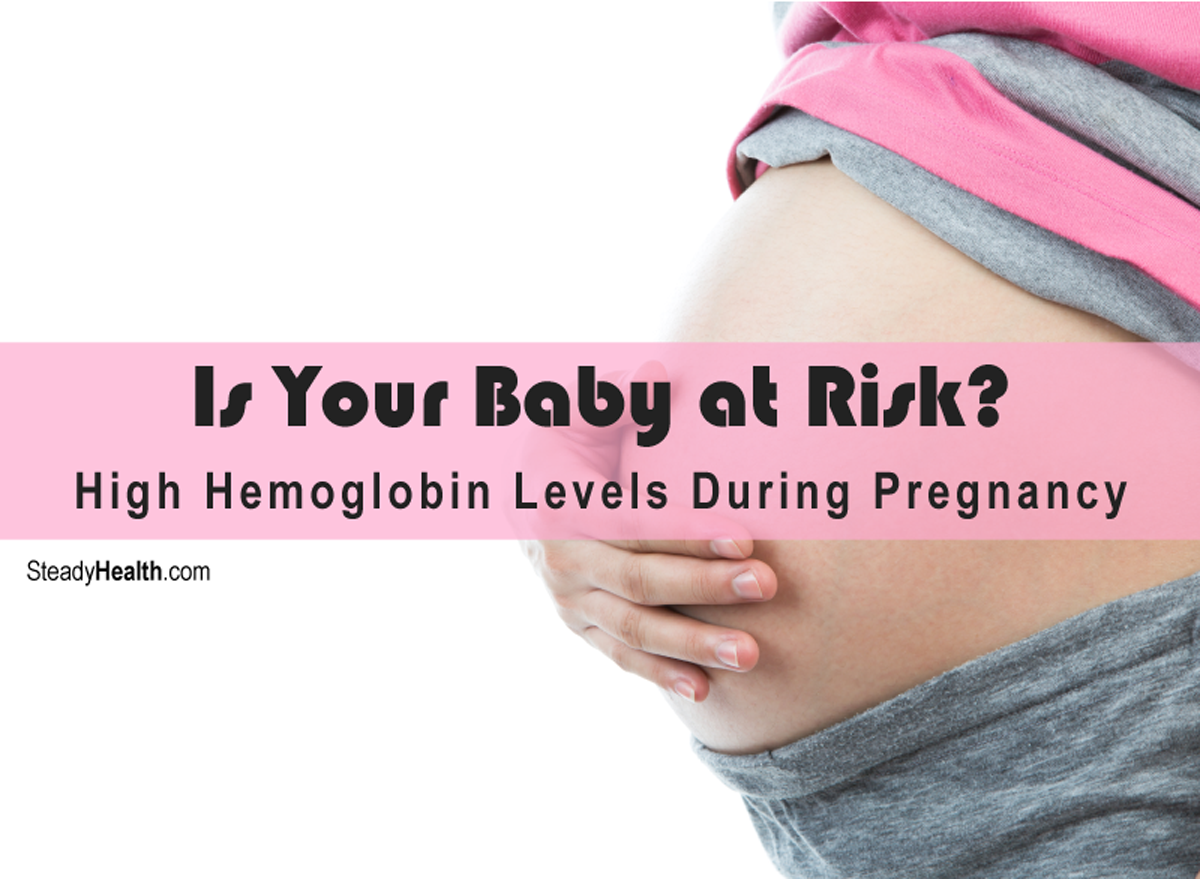

Rich sources of iron include heme iron (in meat, poultry, fish and egg yolk), dry fruits, dark green leafy vegetables (spinach, beans, legumes, lentils) and iron fortified cereals. Dietary advice should be given to all mothers to improve intake and absorption of iron from food. In high risk mothers and multiple pregnancies, an additional hemoglobin check should be performed near term.
Low hematocrit and hemoglobin in pregnancy full#
It is recommended that full blood count should be checked at the booking visit in pregnancy and repeated at 28 weeks to screen for anemia. Pre-pregnancy counseling, dietary advice and therapy is very important for ensuring best pregnancy outcomes. This requirement is not met by food alone in developing countries and oral iron supplementation is justified. Pregnant women need iron to cover their basic losses, increased RBC mass and demand from fetoplacental unit. A hemoglobin (Hb) 11 g/dL or hematocrit of 6 mg in the third trimester. This may be suggested by the symptoms and clinical signs.

It adversely impacts the use of energy sources by muscles and thus the physical capacity and work performance of adolescents and adults. Anemia depresses the immune status and increases the morbidity from infections in all age groups. Anemia adversely affects cognitive performance, behavior and physical growth of infants, preschool and school-aged children. Although dietary deficiency may be contributory, the etiology of the vast majority of cases of iron deficiency anemia in infancy and childhood is maternal iron deficiency anemia in pregnancy. When iron supply does not meet iron demand, the fetal brain may be at risk even if the infant is not anemic.

Even a moderate hemorrhage in an anemic pregnant woman can be fatal.Ī basic principle of fetal/neonatal iron biology is that iron is prioritized to red blood cells at the expense of other tissues, including brain.

The odds for preterm delivery are more than doubled. The odds for fetal growth restriction and low birth weight are tripled. Īnemia increases perinatal risks for mothers and neonates and increases overall infant mortality.
Low hematocrit and hemoglobin in pregnancy skin#
Clinical signs of anemia include pallor, blue sclera, pale conjunctiva, skin and nail changes, leg edema, gum and tongue changes (glossitis and stomatitis), tachycardia and functional heart murmur. As anemia advances, the symptoms of fatigue, irritability, generalized weakness, shortness of breath, frequent sore throats, headache (frontal), brittle nails, pica (unusual craving), decreased appetite and dysphagia (owing to postcricoid oesophageal web) may occur. Women with mild or moderate anemia often tend to be asymptomatic and anemia is detected on screening alone. Anemia is the major contributory or sole cause in 20–40% of maternal deaths. A large number of women from less-resourced countries embark upon pregnancy with frank iron deficiency anemia and/or depleted iron stores. The global prevalence of anemia in pregnancy is estimated to be approximately 41.8%, varying from a low of 5.7% in the USA to a high of 75% in The Gambia. Women from both rural and urban areas are vulnerable. Although more prevalent in less-resourced countries, women from developed countries are also affected. It affects more than 56 million women globally, two-thirds of them being from Asia. Anemia in pregnancy Vikram Sinai Talaulikar MD, MRCOGĪnemia in pregnancy is defined as a hemoglobin concentration of less than 110 g/L (less than 11 g/dL) in venous blood.


 0 kommentar(er)
0 kommentar(er)
